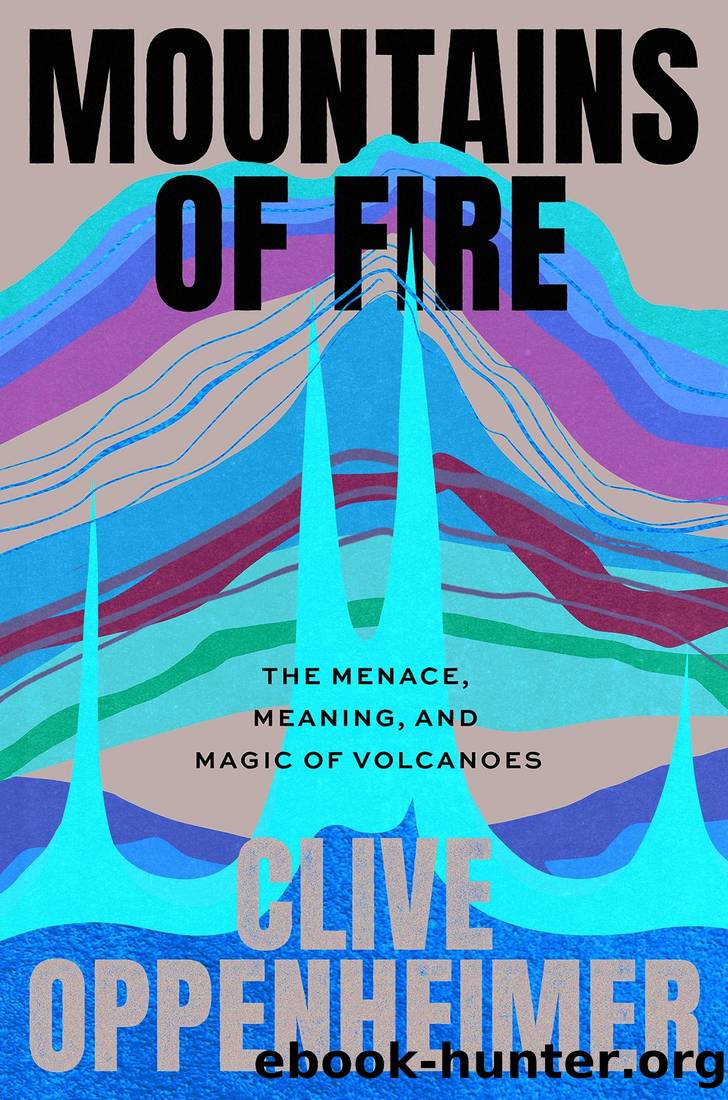Mountains of Fire: The Menace, Meaning, and Magic of Volcanoes by Clive Oppenheimer

Author:Clive Oppenheimer [Oppenheimer, Clive]
Language: eng
Format: epub
Tags: Non-Fiction, Science, History, Volcanology, Nature, Geology, Natural History, Geography
ISBN: 9780226826356
Publisher: University of Chicago Press
Published: 2023-04-24T00:00:00+00:00
Water Tower of the Sahara
Trou au Natron, Tibesti mountains of Chad.1
âIn the desert, lifeâs pleasures are simple but very real: a long drink of clean water.â
â Wilfred Thesiger, âA camel journey to Tibestiâ2
Itâs not every day that you meet an astronaut, especially one who turns out to have had a hand in your research. But it happened to me entirely unexpectedly in the early 2000s aboard a sailboat in the Gulf of Mexico. The encounter was with Captain Michael Baker, veteran of four space missions. I was excited to be able to tell him that I was studying experimental radar imagery recorded from the Space Shuttle. His reply took me aback: âI commanded that mission and operated the radar. I collected those data!â
Radar devices both transmit and receive electromagnetic energy using an antenna. Think of air-traffic control radar, for example: a rotating aerial beams out microwave energy, and the illuminated display shows the location of planes that reflect some of the signal back. The strength of the âechoâ depends on the size and shape of the aircraft.3 But radar does more than this â it is also sensitive to the targetâs âroughnessâ. A smooth-topped ash deposit looks dark in a radar image because most of the microwaves are scattered away, while a bouldery lava flow reflects more of the beam back to the sensor and appears bright. NASA was interested in this capability for mapping the geology of the inner planets, notably the spectacular igneous terrain of Venus.4
The region I had been looking at via this radar imagery wasnât on Earthâs sister planet, but it might as well have been, since it was barely easier to reach: the Tibesti massif of the eastern Sahara desert. Although one of the largest volcanic hotspots on our planet â ten times the area of the Big Island of Hawaiâi, or about the size of Switzerland â the region remains barely known scientifically, owing to decades of conflict and a legacy of landmines.5 I was curious to understand how the Tibesti volcanoes, like Mount Paektu, had formed so far from a tectonic plate boundary, and this required understanding their geological history.6 As I explained my interests to Captain Baker, he smiled and added, âThat range is the most striking land feature I ever saw from space â a huge, dark smudge in the largest hot desert on Earth, right in the heart of Africa.â
I had long felt a calling to desert travel, fuelled by reading books such as Wilfred Thesigerâs Arabian Sands, and seeing movies like The Flight of the Phoenix and Werner Herzogâs Fata Morgana. Iâd even looked into taking a Land Rover maintenance course in my twenties, contemplating a trans-Sahara trip. But my particular fixation on the Tibesti arose from conversations with a retired colleague, Dick Grove, who had travelled there in 1957. Dickâs reminiscences thrilled me; he spoke of travel by camel, ambitious volcano ascents, nights so quiet you could hear shooting stars, and stumbling across spectacular ancient rock art.7 On
Download
This site does not store any files on its server. We only index and link to content provided by other sites. Please contact the content providers to delete copyright contents if any and email us, we'll remove relevant links or contents immediately.
Man-made Catastrophes and Risk Information Concealment by Dmitry Chernov & Didier Sornette(4749)
The Revenge of Geography: What the Map Tells Us About Coming Conflicts and the Battle Against Fate by Kaplan Robert D(3602)
Zero Waste Home by Bea Johnson(3297)
COSMOS by Carl Sagan(2961)
In a Sunburned Country by Bill Bryson(2953)
Good by S. Walden(2920)
The Fate of Rome: Climate, Disease, and the End of an Empire (The Princeton History of the Ancient World) by Kyle Harper(2443)
Camino Island by John Grisham(2392)
A Wilder Time by William E. Glassley(2367)
Organic Mushroom Farming and Mycoremediation by Tradd Cotter(2314)
Human Dynamics Research in Smart and Connected Communities by Shih-Lung Shaw & Daniel Sui(2181)
The Ogre by Doug Scott(2120)
Energy Myths and Realities by Vaclav Smil(2068)
The Traveler's Gift by Andy Andrews(2017)
Inside the Middle East by Avi Melamed(1946)
Birds of New Guinea by Pratt Thane K.; Beehler Bruce M.; Anderton John C(1915)
Ultimate Navigation Manual by Lyle Brotherton(1770)
A History of Warfare by John Keegan(1723)
And the Band Played On by Randy Shilts(1621)
